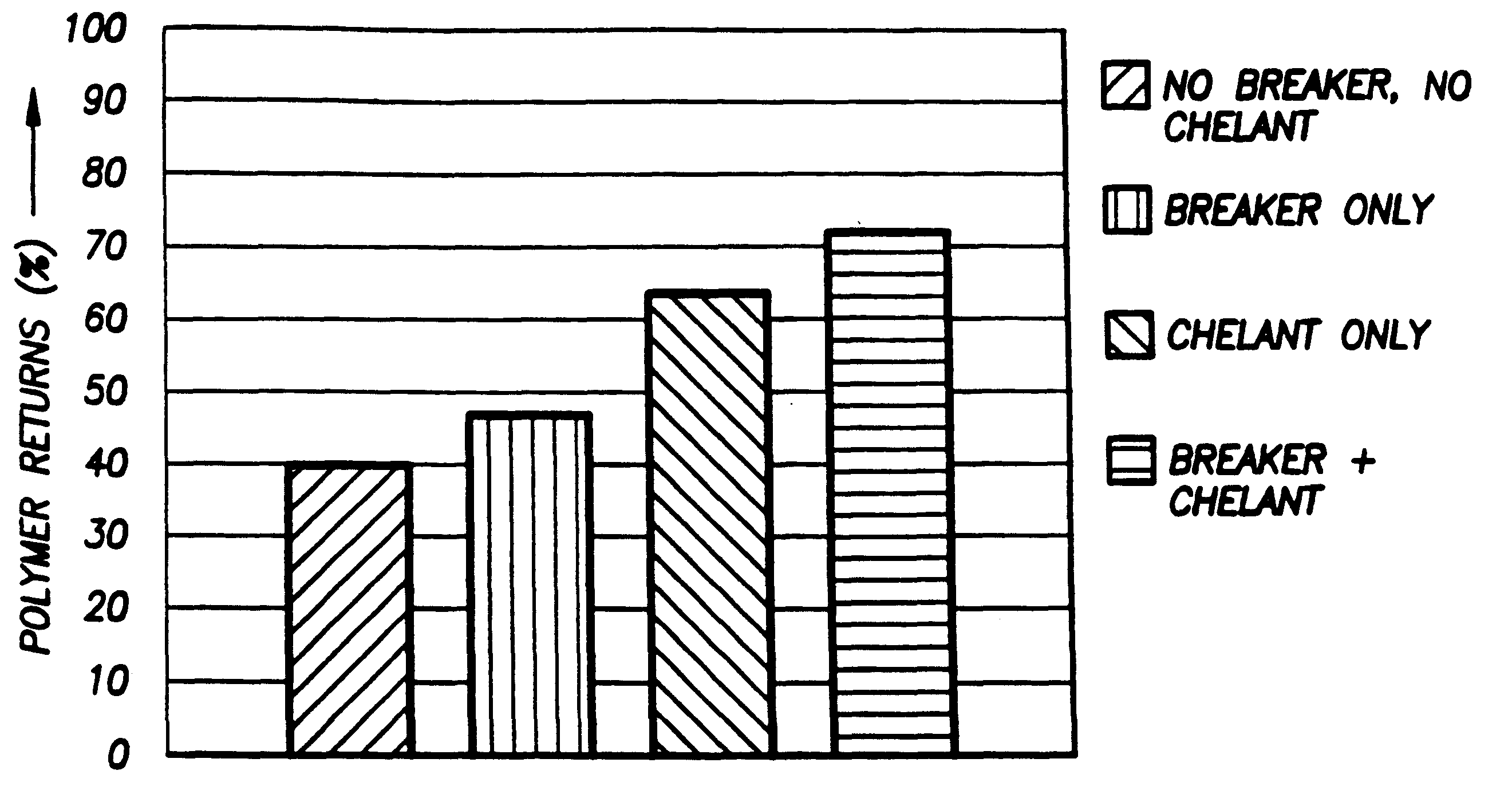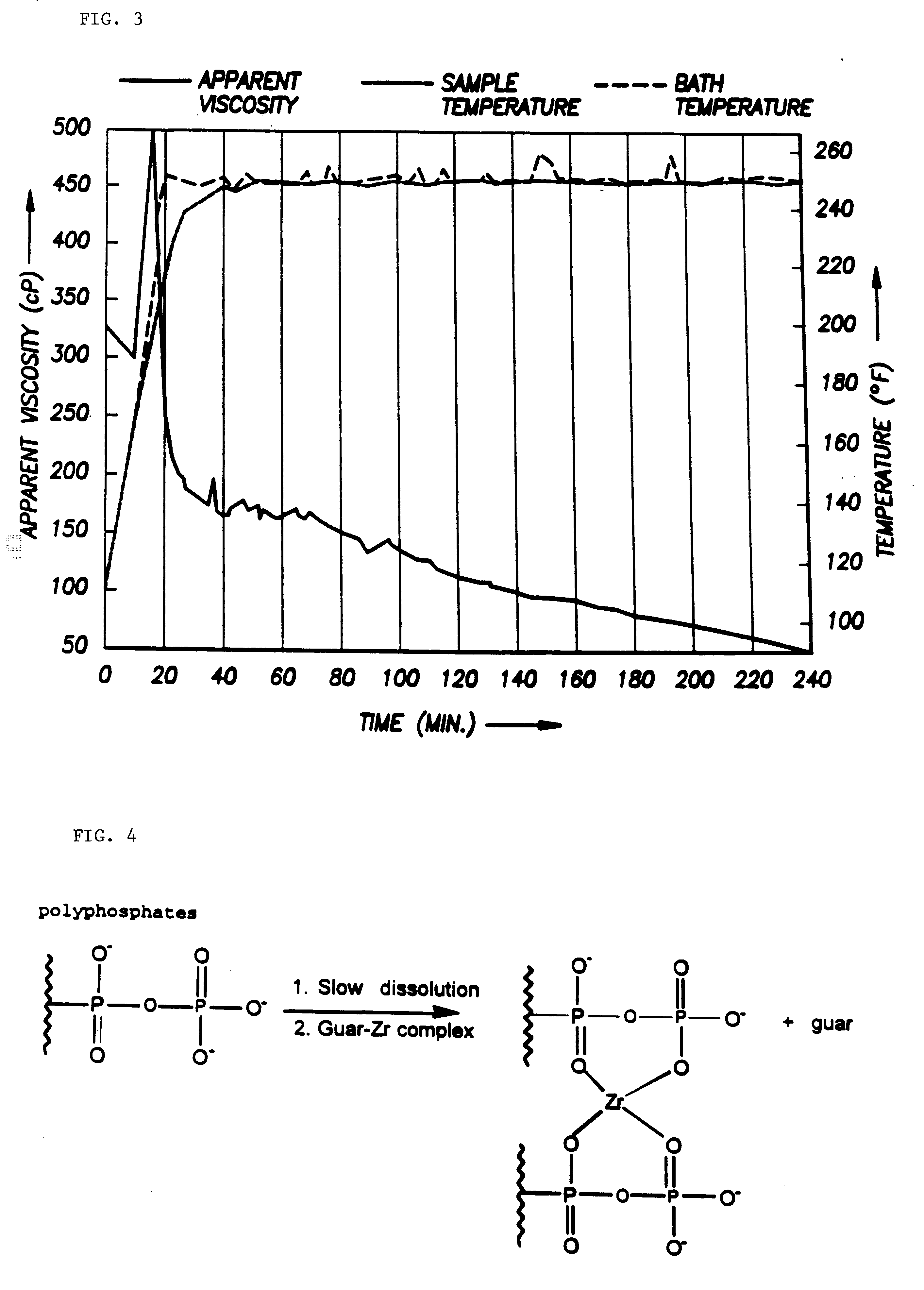Cleanup additive
a technology of additives and zirconate, applied in the direction of fluid removal, other chemical processes, borehole/well accessories, etc., can solve the problems of difficult crosslinking, poor clean-up properties of zirconate crosslinking polymers, and important risks
- Summary
- Abstract
- Description
- Claims
- Application Information
AI Technical Summary
Benefits of technology
Problems solved by technology
Method used
Image
Examples
examples
The following examples merely exemplify various embodiments of the invention. It is understood that the following examples are provided to further illustrate the invention. They do not in anyway limit the scope of the present invention.
Test compositions were prepared with Calgon 29L, sodium calcium magnesium polyphosphate glass, as a 10-30 mesh particle. The Calgon 29L particles dissolved in 140-180.degree. F. water at a rate of 10-20% per month. Because this dissolution rate is too slow for a fracturing fluid cleanup additive, samples of Calgon 29L were hand ground with a mortar and pestle. The ground material was sieved through standard screens to yield samples of various particle size.
The test compositions were tested for rheological properties and conductivity. All compositions were prepared with deionized water. Fann 50's were used to determine whether the compositions could achieve sufficient viscosity to transport proppants and lose sufficient viscosity to break properly. The...
PUM
| Property | Measurement | Unit |
|---|---|---|
| Temperature | aaaaa | aaaaa |
| Fraction | aaaaa | aaaaa |
| Fraction | aaaaa | aaaaa |
Abstract
Description
Claims
Application Information
 Login to View More
Login to View More - R&D
- Intellectual Property
- Life Sciences
- Materials
- Tech Scout
- Unparalleled Data Quality
- Higher Quality Content
- 60% Fewer Hallucinations
Browse by: Latest US Patents, China's latest patents, Technical Efficacy Thesaurus, Application Domain, Technology Topic, Popular Technical Reports.
© 2025 PatSnap. All rights reserved.Legal|Privacy policy|Modern Slavery Act Transparency Statement|Sitemap|About US| Contact US: help@patsnap.com



